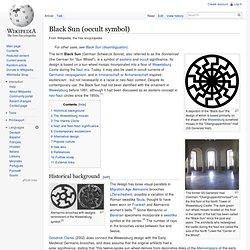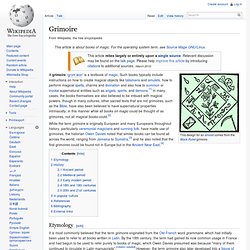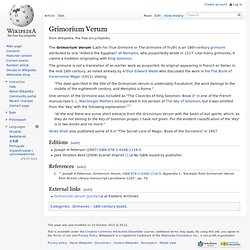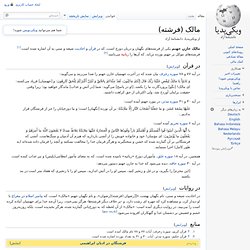

Black Sun (occult symbol) A depiction of the "Black Sun" the design of which is based primarily on the shape of the Wewelsburg sunwheel mosaic in the "Obergruppenführer"-Hall (SS Generals' Hall).

The former SS Generals' Hall (German: "Obergruppenführersaal") on the first floor of the North Tower of Wewelsburg Castle. The dark green sun wheel mosaic located on the floor in the center of the hall has been called the "Black Sun" since the post-war years. The architects who redesigned the castle during the Nazi era called the axis of the North Tower the "Center of the World". The term Black Sun (German Schwarze Sonne), also referred to as the Sonnenrad (the German for "Sun Wheel"), is a symbol of esoteric and occult significance.
Its design is based on a sun wheel mosaic incorporated into a floor of Wewelsburg Castle during the Nazi era. SS. Book of Ceremonial Magic Index. Sacred Texts Grimoires This book is the second edition of a work which in its first edition was titled, more provocatively, The Book of Black Magic and of Pacts.

This book is an attempt to synthesize the procedures of all of the famous Grimoires. It draws on the Key of Solomon, the Grimorium Verum, the apocryphal Fourth Book of Cornelius Agrippa, and many others, including the famous Black Pullet, or Poulet Noir. While Waite is careful in his analysis of the various Grimoires, he treats the subject matter skeptically. The result is an unparalleled look at the details of ceremonial magic. Title PageContentsExplanation Of Full-Page PlatesPrefaceIntroduction. Grimoire. While the term grimoire is originally European and many Europeans throughout history, particularly ceremonial magicians and cunning folk, have made use of grimoires, the historian Owen Davies noted that similar books can be found all across the world, ranging from Jamaica to Sumatra,[3] and he also noted that the first grimoires could be found not in Europe but in the Ancient Near East.[4] Etymology[edit] History[edit] Ancient period[edit] "Many of those [in Ephesus] who believed [in Christianity] now came and openly confessed their evil deeds.

A number who had practised sorcery brought their scrolls together and burned them publicly. Notwithstanding the accounts of Biblical figures like Moses, Enoch and Solomon being associated with magical practices, when Christianity became the dominant faith of the Roman Empire, the early Church frowned upon the propagation of books on magic, connecting it with paganism, and burned books of magic. Medieval period[edit] Early modern period[edit] Grimorium Verum. The Grimorium Verum (Latin for True Grimoire or The Grimoire of Truth) is an 18th-century grimoire attributed to one "Alibeck the Egyptian" of Memphis, who purportedly wrote in 1517.

Like many grimoires, it claims a tradition originating with King Solomon. The grimoire is not a translation of an earlier work as purported, its original appearing in French or Italian in the mid-18th century, as noted already by Arthur Edward Waite who discussed the work in his The Book of Ceremonial Magic (1911), stating: مالک (فرشته) در آیه ۷۷ و ۷۸ سوره زخرف بیان شده که در آخرت جهنمیان خازن جهنم را صدا میزنند و میگویند: وَ نَادَوْاْ يَا مَالِكُ لِيَقْضِ عَلَيْنَا رَبُّكَ قَالَ إِنَّكمُ مَاكِثُونَ، لَقَدْ جِئْنَاكمُ بِالحَْقِّ وَ لَكِنَّ أَكْثرََكُمْ لِلْحَقِّ كَارِهُونَ: و [جهنمیان] فریاد میکشند: ای مالک!

[بگو] پروردگارت ما را بکشد، [او در پاسخ] میگوید: شما [در آتش و عذاب] ماندگار خواهید بود؛ زیرا وقتی حقیقت برایتان آوردخ شد، ولی اکثرتان از حق کراهت داشتید. در آیه ۳۰ و ۳۱ سوره مدثر، در مورد جهنم آمده است: عَلَيهَْا تِسْعَةَ عَشَرَ، وَ مَا جَعَلْنَا أَصْحَابَ النَّارِ إِلَّا مَلَائِكَةً: بر آن نوزده [نگهبان] است؛ و ما دوزخبانان را جز از فرشتگان قرار ندادیم...
در آیه ۶ سوره تحریم آمده است: يا أَيُّهَا الَّذينَ آمَنُوا قُوا أَنْفُسَكُمْ وَ أَهْليكُمْ ناراً وَقُودُهَا النَّاسُ وَ الْحِجارَةُ عَلَيْها مَلائِكَةٌ غِلاظٌ شِدادٌ لا يَعْصُونَ اللَّهَ ما أَمَرَهُمْ وَ يَفْعَلُونَ ما يُؤْمَرُونَ: اى مؤمنان! همچنین، در آیه ۱۸ سوره علق، مأموران دوزخ «زبانیه» نامیده شده است، که به معنای مأمور انتظامی(پلیس) و نیز عذاب کننده است. نيما محي الدين - فرشتگان و اسامی آن ها.